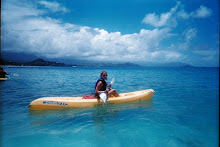Cognitive Learning Theory is prevalent in most any classroom you would come across today. In this week's DVD presentation, Dr. Orey refers to the Information Processing Model, in which the brain first receives information and then stores it in short term, followed by long term memory. Students are doing this every day in class with the information they are being taught. As a teacher, it is my goal to teach students information which ultimately they will store in long term memory.
Dr. Orey also refers to Paivio's dual coding hypothesis which involves information being stored as images, text, and even smell. I know that I personally remember things better when I have an image in my head that I have somehow related to what I learned or connected with a smell of a certain activity that I participated in. I try to incorporate images in to as many lessons as I can. I teach a lot of lessons on my interactive white board.
Online sites such as BrainPop and United Streaming are sites that I use often in my lesson. The visuals, sounds, and images help the students retain information, especially when they are able to make a personal connection with the things they are seeing. Dr. Orey talks about Elaboration Theory which is the primary mechanism for storing stuff into long-term memory (Laureate, 2009). When students are learning something new that they don't know anything about, they associate some piece that is familiar and make a connection to help them remember. Instructional strategies such as using online educational sites in your classroom is definitely something that I find effective and useful in my classroom.
Resources:
Laureate Education, Inc. (Producer). 2009. Behaviorist Learning Theory: Cognitive Learning Theories (DVD). Baltimore, MD. Author.
Subscribe to:
Post Comments (Atom)

Hello Abby,
ReplyDeleteI so agree with your statement that, “Cognitive Learning Theory is prevalent in most any classroom you would come across today.” As I reflected on the cognitive learning theories, I realized that after sixteen years in the elementary classroom, I have instinctively used the theory without making a conscious decision to do so. In practice, it is clear that students incorporate new knowledge into their existing schema by making connections to prior knowledge. As I reflect on my teaching at the third grade level, I constantly use cues and questions which allow students to connect new information to well practiced and understood knowledge. Through use of this method, I have been helping students to practice elaboration theory as I provide opportunities to connect new information, stored in short term memory, to ideas and knowledge stored in long term memory. As knowledge becomes imbedded in their long term memory, the students can use existing ideas to access or recall new learning.
I have been enjoying exploring virtual field trip sites and look forward to presenting my students with context mapping strategies for note taking and connection making in an effort to help them to move new knowledge from short term to long term memory.
Abby,
ReplyDeleteYou list quality resources and make good suggestions in your post. I usually include a film clip from United Streaming as part of my presentation, and my learners love BrainPop. I found myself utilizing the tools we aquire in this course. For example, this week my class constructed concept maps, went on a virtual field trip and created graphic organizers based on Paivio's hypothesis. I would say each activity was successful and my students enjoyed the lessons. I would like to hear how your experience with these resources affected your student's learning outcomes. Thank you for sharing.
Abby, You and Ken both mentioned using BrainPop, I have never used it, but now I am planning incorporating it into my lesson plan.
ReplyDeleteI totally agree about using images while learning. I have my high school students draw images with their vocabulary. They also get excited about using crayons. Sometimes old school ways work well.
I took Dr. Orey's advice this week to help my students develop more connections to the content we are studying in science. Fortunately/unfortunately, my husband is a hunter and two weeks ago saw a deer get hit on his way to work. Not wanting the meat to go to waste, he brought it home and butchered it with my son. I was able to take the heart into class and share it with my students. I was able to show them how the two halves of the heart work totally independently of each other by dissecting the right and left sides. They were able to hold it and see the chambers inside. I'm hoping when they have their test at the end of the week, retrieving the information will be easier for them.
ReplyDelete